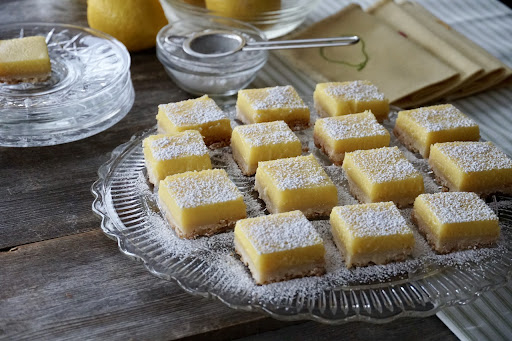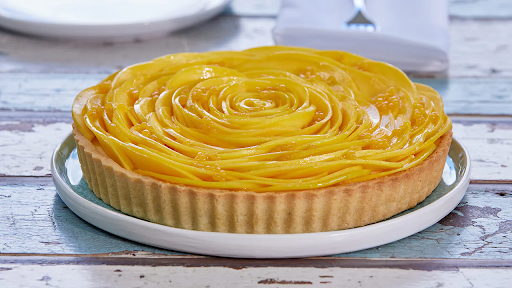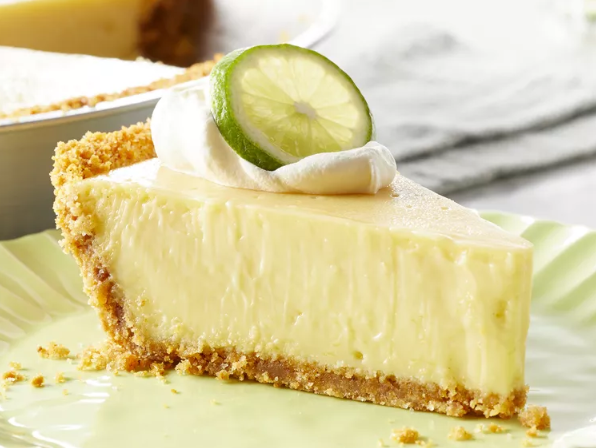Coconut Cream Pie: A Slice of Heaven From the Coconut Tree to Your Table
Coconut cream pie is a delightful combination of sweet, nutty, and tropical flavours that can take you to paradise and back with every bite. It features a crispy, buttery pie crust, a thick, rich coconut filling, and mounds of sweet whipped cream on top. The pie would be a perfect choice as a sweet finale for a special dinner or an afternoon treat.
In this blog post, we will explore this delicious cream pie and a few of its varieties, delve into its history and shed some light on a very important issue regarding the ethical concerns around coconut harvest, monkey labour, and animal rights.
The World of Cream Pies
Generally speaking, any type of pie that is filled with a rich custard or pudding made from milk, cream, sugar, flour, and eggs would be considered a cream pie. With whipped cream being the common feature, they come in many forms and with different flavours, including vanilla, lemon, peanut butter, banana, chocolate, and of course, coconut.
Most cream pies are one-crust, with the crust covering the bottom and the sides but not the top. The filling can either be cooked or uncooked.

The heavenly pie with roasted flakes as topping (The Kitchn)
What’s in a Coconut Cream Pie?
As the name suggests, we are dealing with a subcategory of cream pie that includes one or more coconut products as ingredients and/or toppings. As there are several variations out there with differing recipes, the pie may include shredded coconut, coconut milk, coconut cream, coconut oil, milk, cream, whipped cream, or a combination of the above.
Let’s First Define a Few Confusing Names
Before diving into the coconut dessert talk, let’s briefly break down a few terms to clear your mind and avoid any confusions once and for all:
-
Coconut water:
The liquid inside a young, immature coconut. It’s consumed in tropical regions and sometimes sold as a sports drink. It should not be confused with coconut milk. -
Coconut milk:
Made by pressing grated coconut meat with hot water, extracting oil, proteins, and flavour compounds. It’s commonly used in cooking and contains 5-20% fat.
-
Coconut cream:
Similar to coconut milk, but with a higher fat content of 20-50%. It’s also used in cooking and contains mostly saturated fat.
-
Cream of Coconut:
A sweetened, processed coconut milk product from Puerto Rico, used in many desserts and beverages like pina colada. It should not be confused with coconut cream.
A Few Interesting Varieties of the Pie
Now that we have set the ground, let’s tickle our taste buds a little. Like any other delicious dessert, coconut cream pie comes in many forms with different recipes but similar tastes and looks. Below, you can explore a number of delicious variations of this delightful treat.
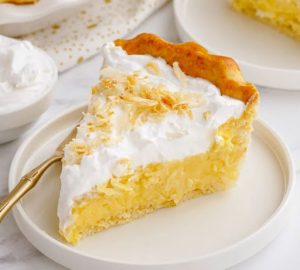
Old-Fashioned Coconut Cream Pie (the novice chef blog)
1. Old-Fashioned Version
This old-fashioned version is based on a classic recipe and deserves a try. The coconut filling is not overly sweet and has the perfect balance of texture and flavour.
The ingredients include shredded coconut, whole milk, sugar, and eggs to make the filling and maybe a little flour and cornstarch to stabilize it further. A thick layer of coconut cream and a generous amount of whipped cream is then poured into a baked crusty pie shell, topped with toasted coconut.
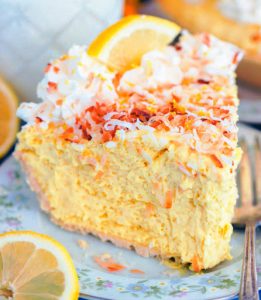
No-bake coconut lemon cream pie (the gold lining girl)
2. No-Bake Coconut Lemon Cream Pie
Coconuts and lemons make a perfect combination in terms of taste. This popular pudding pie, which in fact, is derived from the no-bake cream pie recipe, takes only 15 to 20 minutes to prepare, without an oven and with rather few, simple ingredients. It’s light, creamy, lush, and yet refreshing, rich, and satisfying, which makes it perfect as a summer dessert.
It can be made with regular store-bought crust or with an even better, customized short-bread-like crust made with coconut oil which will add an extra depth to this flaky, crumbly, and delicious dessert. The filling is also full of lemon and coconut flavours, amplified with fresh lemon zest and shredded coconut meat.

Coconut cream pie with meringue (pastries like a pro)
3. Coconut Cream Meringue Pie
What differentiates this variation from others is that it has a thick, velvety, airy, and fluffy meringue, which can be topped with crispy shredded or flaked coconut.
A Brief History of the Pie
Coconut cream pie has been around for at least a hundred years. In the late 1800s, when Europeans and Americans were enjoying the newly introduced tropical fruits such as pineapples and bananas, they had no idea what to do with coconuts. It was difficult to transport it due to its size and weight, and it was not trivial how to open it and use various parts of the fruit.
However, a Ceylon-based French company started producing shredded and dried coconut meat for easier transportation. This innovative technique proved to be a successful strategy and soon made coconuts widely available to European chefs.
After coconuts gained popularity in Europe, they made their way to the United States. A Philadelphian flour miller named “Franklin Baker” received a shipment of coconuts as payment from a Cuban businessman in 1894. Baker tried to find a buyer for the shipment but soon realized there was an untapped market for coconut products and entered the business.
By 1897, the coconut business had made such huge progress that Baker decided to sell the flour company, start a new one, and focus solely on the new business with the help of his son, Franklin Baker Jr. The new business eventually became known as Franklin Baker Company, and over time, it turned into the leading supplier of coconut products in the US.
As soon as Baker put this tropical fruit in the hands of Americans, recipes for coconut cream pie started to show up in cookbooks. By the early 1900s, coconut custards and pies were everywhere.
That’s no wonder at all. The pie is truly exceptional and worth the effort. The crust is made with butter (instead of shortening) which results in a flaky and crisp texture and a great flavour. The coconut filling is also rich and creamy, with plenty of toasted coconuts. The whipped cream can be slightly sweetened with a hint of rum. A very small proportion of gelatine can also be used to stabilize the whipped cream’s consistency.
Coconut Cream Pie vs. Coconut Custard Pie
These two are extremely similar, but the coconut custard pie has more of a jello texture, while the other is slightly softer. Another small difference between the two is that the custard filling needs to be poured raw into the crust and baked before serving. But the filling for the cream pie should be prepared on the stovetop separately, poured into the crust, and then refrigerated.

Buko Pie (kawaling pinoy)
Buko Pie: A Serious Coconutty Rival!
When it comes to coconuts, the Filipino Buko pie is a serious competitor you should be familiar with. With similar main ingredients but different preparation, Buko pie:
- Is usually enclosed in a flaky pie crust that covers the top as well,
- Is more of a coconut pie, thanks to the young coconut meat,
- Doesn’t require nutmeg or vanilla traditionally,
- And doesn’t have whipped cream or meringue on top.
Coconut’s Incredible Journey to Our Tables
Coconut palms usually grow in hot and humid tropical climates, and one of their common habitats is on the beach. Ever wondered why? Coconut fruits found in the wild are lightweight and highly waterproof. It is believed that the fruit evolved in such a way to be able to travel long distances by floating on ocean currents. Some estimates suggest the fruit can travel up to 5,000 kilometers by sea and still germinate after 110 days.
With a widespread chain of islands scattered across the Indian and Pacific Oceans, Indonesia is the top producer of coconuts in the world. The country produces around 17 million metric tons every year. India and the Philippines are, respectively, the second and third largest producers.

Macaques, skilled climber monkeys (Wikipedia)
Monkey labour: How Coconut Harvest and Animal Cruelty Are Related?
Coconut harvesting has been a dangerous task for workers, with climbing being the most common method. But in 2019, an American animal rights nonprofit organization called PETA (People for the Ethical Treatment of Animals) highlighted a controversial method employed by a number of farmers in certain parts of Southeast Asia, especially Thailand.
Young monkeys were abducted from their families when they were just babies, kept chained using rigid metal collars, abusively trained, and forced to climb trees to harvest coconuts. Thailand is the 9th producer of coconut in the world, with 0.8 million metric tons each year.
According to Vincent Nijman, an anthropology professor and head of the Oxford Wildlife Trade Research Group at Oxford Brookes University, who has researched coconut-harvesting macaques in Thailand, the practice is largely confined to the southernmost part of Thailand, and the total volume is small, compared to the total number of coconuts harvested each year. “The vast majority of coconut and coconut products do not come from farms where pig-tailed macaques are employed,” he believes.
The Thai government has denied the accusations, and we do not know how widespread this practice is. “As with elephant rides and bullfights, people are beginning to rethink old cultural practices that involve animal suffering.” Edwin Wiek, an animal welfare advisor to Thailand’s parliament, told National Geographic. In 2021, he estimated that out of as many as 15,000 monkeys working on coconut farms 15 years ago, only 3,000 are doing it today.
Animal rights activists and concerned consumers have played a significant role in promoting ethical consumerism by calling for a boycott of coconut products produced using animal labour. Several large retailers, including HelloFresh, Walmart, and Costco, stopped using certain coconut milk brands from Thai providers. (Curious to know if the coconut products you use come from responsible sources or not? Animal Place, which is a sanctuary for farmed animals, has prepared a list of companies that do not use monkey labour and are fair-trade).
The monkey labour practice is hopefully dying, but the need to care about the way we produce our food never dies. So the next time that you enjoy a delicious dessert like the coconut cream pie, think about how you can promote animal rights and responsible farming practices, support local economies, and ensure that the food you eat is delicious, nutritious, and responsibly prepared.





